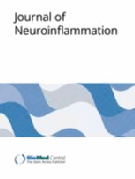
“Bacterial infections are often accompanied by fever and generalized muscle pain. However, the treatment of pain with an infectious etiology has been overlooked. Thus, we investigated the impact of cannabidiol (CBD) in bacterial lipopolysaccharide (LPS)-induced nociception.
Male Swiss mice received intrathecal (i.t.) LPS injection, and the nociceptive threshold was measured by the von Frey filaments test. Spinal involvement of the cannabinoid CB2 receptor, toll-like receptor 4 (TLR4), microglia and astrocytes were evaluated by i.t. administration of their respectively antagonists or inhibitors. Western blot, immunofluorescence, ELISA and liquid chromatography-mass spectrometry were used to assess Cannabinoid CB2 receptors and TLR4 spinal expression, proinflammatory cytokines and endocannabinoid levels. CBD was administered intraperitoneally at 10 mg/kg.
The pharmacological assay demonstrated TLR4 participation in LPS-induced nociception. In addition, spinal TLR4 expression and proinflammatory cytokine levels were increased in this process.
CBD treatment prevented LPS-induced nociception and TLR4 expression.
AM630 reversed antinociception and reduced CBD-induced endocannabinoids upregulation. Increased spinal expression of the cannabinoid CB2 receptor was also found in animals receiving LPS, which was accompanied by reduced TLR4 expression in CBD-treated mice.
Taken together, our findings indicated that CBD is a potential treatment strategy to control LPS-induced pain by attenuating TLR4 activation via the endocannabinoid system.”









